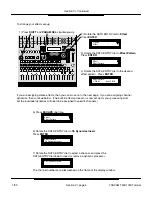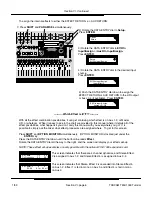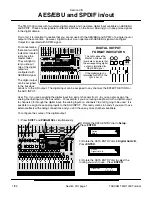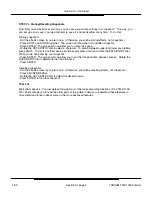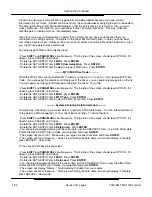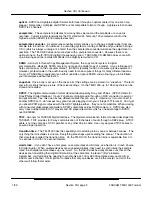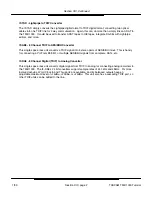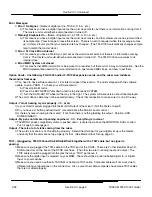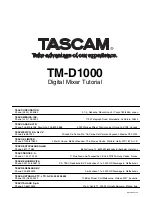
Our wonderful artistic musical world has been flooded with acronym alphabet soup in the last 10 years or
so. Here’s a guide to help you better understand what all those techie terms mean.
AES/EBU
- The digital communication format standard developed by the Audio Engineering Society and
European Broadcast Union. It puts 2 channels of digital audio through an XLR connector. (Obviously, it
must connect to another AES/EBU port... don’t expect any great results plugging it into your mic pre.) If
you are copying DAT tapes or CDs, this might not be the format to use since it does not transmit track
data (whereas SPDIF does). However, the good news is that there is no SCMS code on the signal.
bit rate
- Each time that digital audio records the amplitude of a signal, it is done with a binary number
(in 0’s and 1’s.) Each 0 or 1 is a bit. The bit rate simply lets you know how many 0’s and 1’s are used to
record the signal. The widely accepted standard in digital audio is the CD quality 16 bit.
CD
- Acronym for Compact Disc. Perhaps you’ve heard of it.
CD-R
- Acronym for Compact Disc Recordable. This is a CD that you can record to only once. CD-R
discs will work in the majority of CD players and CD-ROMs. There are standard CD-R media, and
“music” CD-R media. Instead of (or sometimes in addition to) SCMS code, some manufacturers have
made CD-R devices require “music” CD media which are significantly (as much as 6 times) more
expensive than regular CD-R media to prevent or help offset the cost of piracy. However, TASCAM
units are designed for professionals and people making their own music, so they work with the standard,
inexpensive CD-R media and override or ignore SCMS code. (i.e. CD-RW5000, CD-D4000, CD-R400)
CD-RW
- Acronym for Compact Disc ReWriteable. This is a CD you can write, erase and rewrite over
and over again. The only catch is that CD-RW does not work in many standard CD players or CD-
ROMs. However, these are still great for experimentation or assembly of a master. Almost all CD-RW
drives can also read/record CD-R discs as well. (i.e. CD-RW5000)
coaxial
- In the audio industry, this is a fancy way of saying “SPDIF signal down an RCA cable.”
Typically, a coaxial port is an RCA connector that is set up to carry SPDIF signal. However, be aware
that some devices allow you to transmit AES/EBU out the coax port also.
DAT
- Acronym for Digital Audio Tape. DAT recorders work like a cross between CD and cassette. The
tape stores stereo digital information and can utilize track ID numbers just like a CD. DAT uses the
familiar cassette transport controls, and can be written and re-written many times. (i.e. TASCAM DA-
20mkII, DA-40, DA-45HR, DAP-1)
DTRS
- Acronym for Digital Tape Recording System. This refers to TASCAM’s MDM recording system
which uses Hi8 tapes. (i.e. DA-38, DA-88, DA-98)
EQ
- Acronym for Equalizer. Most people are pretty familiar with EQ; it operates on a mixer just like it
does on a home stereo. However, most people are not familiar with the different types of EQ. (i.e.
parametric, sweepable, shelf, peak, etc.) Below are some basic explanations of the different types.
Boost/Cut
- Boost/cut is the type of EQ found on most home stereos. It simply boosts or cuts the
frequency response around a center frequency in a Bell curve fashion. The amount of boost or cut
is controlled by the “Gain” dial, and the frequency given is the center frequency.
Shelf
- Similar to the boost/cut, a shelf EQ is fixed in location and is a simple boost or cut.
However, instead of the band-width building and falling around a center frequency, it boosts up to it,
and continues boosting at the desired level until it reaches the end of our hearing potential. So, a
low shelf EQ gain pattern could slope up to 80Hz, and continue at that amount of gain all the way
down to the frequency response of the mixer. The High Shelf may slope up to 12kHz, and continue
at that boost until it reaches the highest frequency response of the mixer. The amount of boost or
cut is controlled by the “Gain” dial, and the frequency given is usually the frequency where the EQ
first reaches its maximum level.
Section XIII
What the Heck is That?
Section XIII, page 1
TASCAM TM-D1000 Tutorial
1/99


